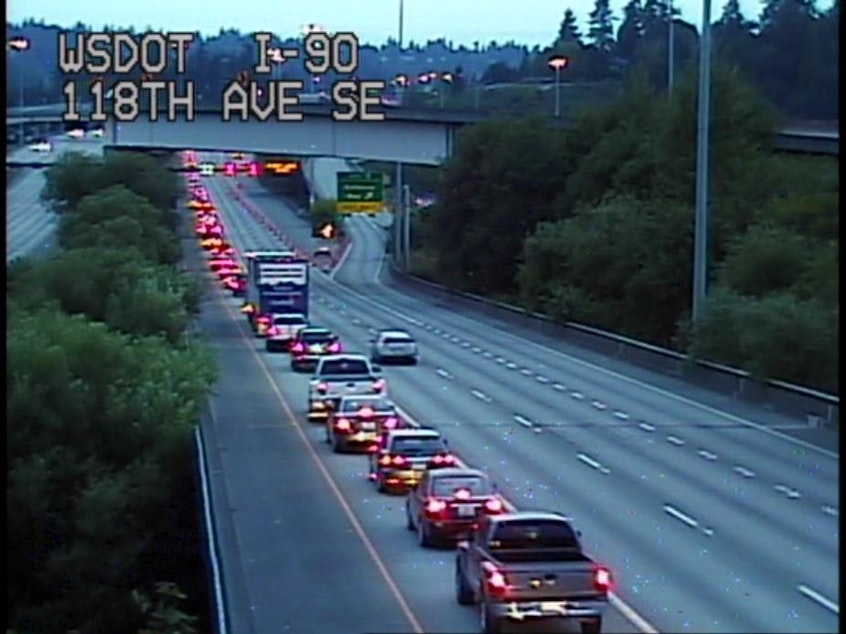3 driving tips to make Seattle traffic slightly less awful

Three years ago, we ran a story about a little-known traffic tip known as the "zipper merge."
In short: Drivers should use all lanes leading up to a merge point, rather than clog up one lane. Arrived at the front of the line, drivers in all lanes take turns merging. This is not cheating! (See image above for why the seemingly polite way gunks up traffic.)
Our story went viral — and we believe, based on the commutes of two people who sit in the same pod at KUOW, that it improved traffic at several merge points in the city.
We wondered if there were other such counterintuitive tips, and there are! Behold:
The zipper merge
Sponsored
It might seem selfish, but the best way to ease congestion, according to the Washington State Department of Transportation, is to drive right up to the closure before merging over.
"There can be the weird idea that goes through people's head that, 'Those people are cheating, they're cutting in line,'” said spokesman Travis Phelps. “Well, it actually helps traffic flow if you can let folks in. Play nice with the other person, let them in. Treat traffic like a team sport," Phelps said.
Phelps said that merging in the middle can create a small choke point. The trick is to put on your blinker, don't make any sudden movements and don't try to force your way in.
Also, make sure to give a courtesy wave to your fellow drivers.
"This is something we're all in together," he said. "So if we can play nice for four days, that's great."
Sponsored
Mark Hallenbeck, Director of the Washington State Transportation Center, specified that the zipper merge is great in slow traffic — not when you're moving quickly.
'The bubble'
William Beaty, a research engineer at the University of Washington, has publicized a theory that seems counterintuitive: Leave a large space (or traffic bubble) in front of your car while driving to help prevent traffic jams. That allows cars to merge without slowing anyone down, meaning traffic keeps moving at the same speed.
“Leaving bubbles is what you’re supposed to do,” Beaty said. “Everyone thinks if we just push ahead we’d get there faster, but that’s what creates a plug. You don’t want to push ahead. You want to maintain wide spaces.”
Even so, Beaty says he finds himself feeling annoyed when he sees a driver doing the very thing he knows will help get him to his destination faster.
Sponsored
“I know intellectually that’s making us faster, but I still want to honk at the guy,” he said.
It’s worth noting that maintaining a wide space isn’t the same as driving slower than everyone else. The latter will slow down traffic and prompt other drivers to weave to get around you, which is dangerous. And Beaty noted that the bubble theory only applies to highway driving. On city streets controlled by traffic lights, drivers should push ahead so more cars can proceed before the light turns red.
Aggressive right-lane drivers
“You’re well aware of people who insist on driving by you on the right and fighting their way back in,” said Mark Hallenbeck.
Sponsored
Why yes we are, because we are one of those drivers.
Here’s what happens: We’re driving along in the left lane, which comes to an abrupt halt because five cars ahead is a driver waiting to turn. So we turn on a blinker and aggressively push into the right lane.
Two blocks ahead — damn — a parked car, so we push back into the left lane.
“When people don’t move, and you drive around them, it creates a dangerous situation for everybody,” Hallenbeck said.
But also: We’re not saving much time. Hallenbeck said we save about five to six seconds each time we do this.
Sponsored
We tested this theory on our commute home via 50th Avenue North, an east-west street. Rather than veering into the left lane, we waited with a stopwatch.
Hallenbeck was right – the waits were between three and six seconds.


